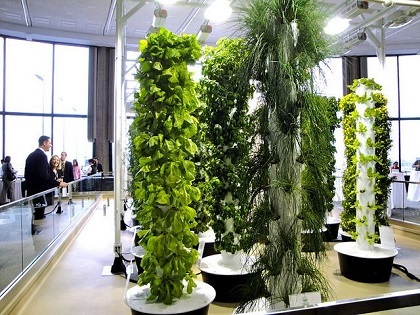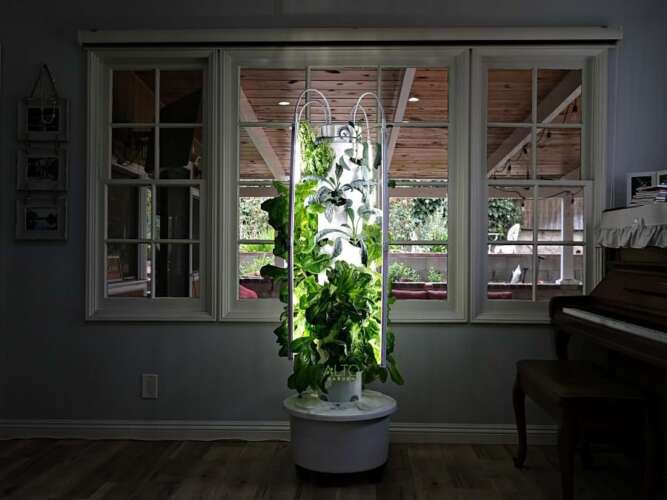In an era where urban living often means sacrificing green space, the advent of the aeroponic tower garden offers a revolutionary solution. By integrating the concepts of aeroponics and hydroponics, this vertical gardening method transforms compact balconies, patios, and even indoor corners into lush, productive oases. Unlike traditional soil-based systems, the aeroponic tower elevates plants—both literally and figuratively—by suspending roots in air, then misting them with a nutrient-rich solution. As a subset of the broader hydroponics family, it merges precision nutrient delivery with exceptional water efficiency, redefining what’s possible in residential gardening.
Understanding the Aeroponic Tower System
How It Differs from Conventional Hydroponic Tower Methods
While all hydroponic tower systems eliminate soil in favour of water-based nutrient delivery, the aeroponic tower garden stands apart by exposing roots directly to air. In typical hydroponic towers, roots are continuously bathed in a nutrient solution, whereas aeroponics employs an intermittent misting schedule—often 15 minutes on and 45 minutes off. This interruption increases oxygen exposure, leading to more vigorous root respiration and faster plant growth. Moreover, the closed-loop design recycles nearly all water, reducing consumption by up to 95% compared to soil gardening.
The Core Components of an Aeroponic Tower
- Reservoir: Holds the water-and-nutrient solution, serving as the system’s foundation.
- Pump: Submersible or external, it propels the nutrient mix upward to the misting nozzles.
- Misting Nozzles: Atomise nutrient solution into a fine spray that coats the suspended root mass.
- Vertical Sections: Modular planting chambers stacked to maximise yield per square meter.
- Timers: Automate watering cycles and, if indoors, coordinate with grow lights for consistent plant schedules.
Each component works in concert to deliver precise, efficient hydration and nutrition, ensuring roots never drown or dehydrate.
The Science Behind Rapid Growth
Oxygen Uptake and Nutrient Absorption
Plants absorb oxygen and nutrients through their roots. In soil, roots often struggle for oxygen, especially when overwatered or in compacted earth. In an aeroponic tower, roots hang freely, inhaling air between misting cycles. This optimised root respiration accelerates metabolic processes, enabling nutrient uptake rates up to three times faster than traditional methods. As a result, leafy greens, herbs, and even fruiting vegetables reach harvest readiness far sooner.
Comparative Yield and Efficiency
Laboratory and commercial studies highlight that aeroponic systems can produce comparable yields to soil or other hydroponic setups, but in a fraction of the time and with a smaller footprint. By fine-tuning nutrient concentrations and misting frequency, gardeners achieve uniform growth across all plants, eliminating the uneven development frequently seen in ground beds.
Selecting Ideal Plants for Your Tower
Leafy Greens and Herbs
- Lettuce & Spinach: Rapid germination and shallow root systems thrive in mist environments.
- Basil & Parsley: Aromatic herbs relish consistent moisture and oxygen.
Fruiting Crops with Support Structures
- Tomatoes & Cucumbers: Require trellising within tower sections to manage vining habits.
- Strawberries: Compact, trailing varieties adapt well to vertical chambers.
By rotating crops seasonally, gardeners maintain continuous production, maximising both space and nutritional diversity.
Installation and Maintenance Best Practices
Site Selection and Light Requirements
For outdoor setups, choose a location with at least six hours of direct sunlight. Indoor towers benefit from full-spectrum LED grow lights, mounted to cover the entire vertical range. Position lights 6–12 inches above the highest canopy and run them for 12–16 hours daily, adjusting for plant species and growth stages.
Monitoring pH, Water Level, and Nutrients
- pH Balance: Aim for a range of 5.5–6.5 to optimise nutrient solubility.
- Reservoir Level: Ensure the pump remains submerged to avoid airlock and root dehydration.
- Nutrient Solution: Replace or top off every two weeks to prevent mineral buildup and maintain concentration.
Regular checks safeguard against nutrient deficiencies or toxicities, ensuring robust health.
Applications and Environmental Impact
Residential and Urban Farming
The aeroponic tower garden shines in apartments, rooftop terraces, and small backyards. By growing vertically, it delivers higher yields per square meter, empowering city dwellers to harvest fresh produce year-round. The negligible water waste aligns with sustainable living goals, making it ideal for drought-prone regions.
Commercial and Research Endeavours
Large-scale hydroponic towers, scaled up from residential prototypes, support greenhouse operations and controlled-environment agriculture. Research institutions leverage aeroponic towers to study plant physiology under precise conditions, accelerating innovations in crop resilience and biotechnology.
Conclusion
Embracing vertical gardening with an aeroponic tower garden merges horticultural efficiency with environmental responsibility. The amalgamation of oxygen-rich root exposure, automated nutrient delivery, and compact design empowers growers to cultivate more food with fewer resources. Whether you’re an urban novice or an agricultural innovator, the hydroponic tower revolution redefines how we grow.
At ALTO Garden, we champion accessible micro-farming solutions that bring farm-to-table freshness into every home, reducing the carbon footprint of your produce and elevating your connection to the food you grow.

